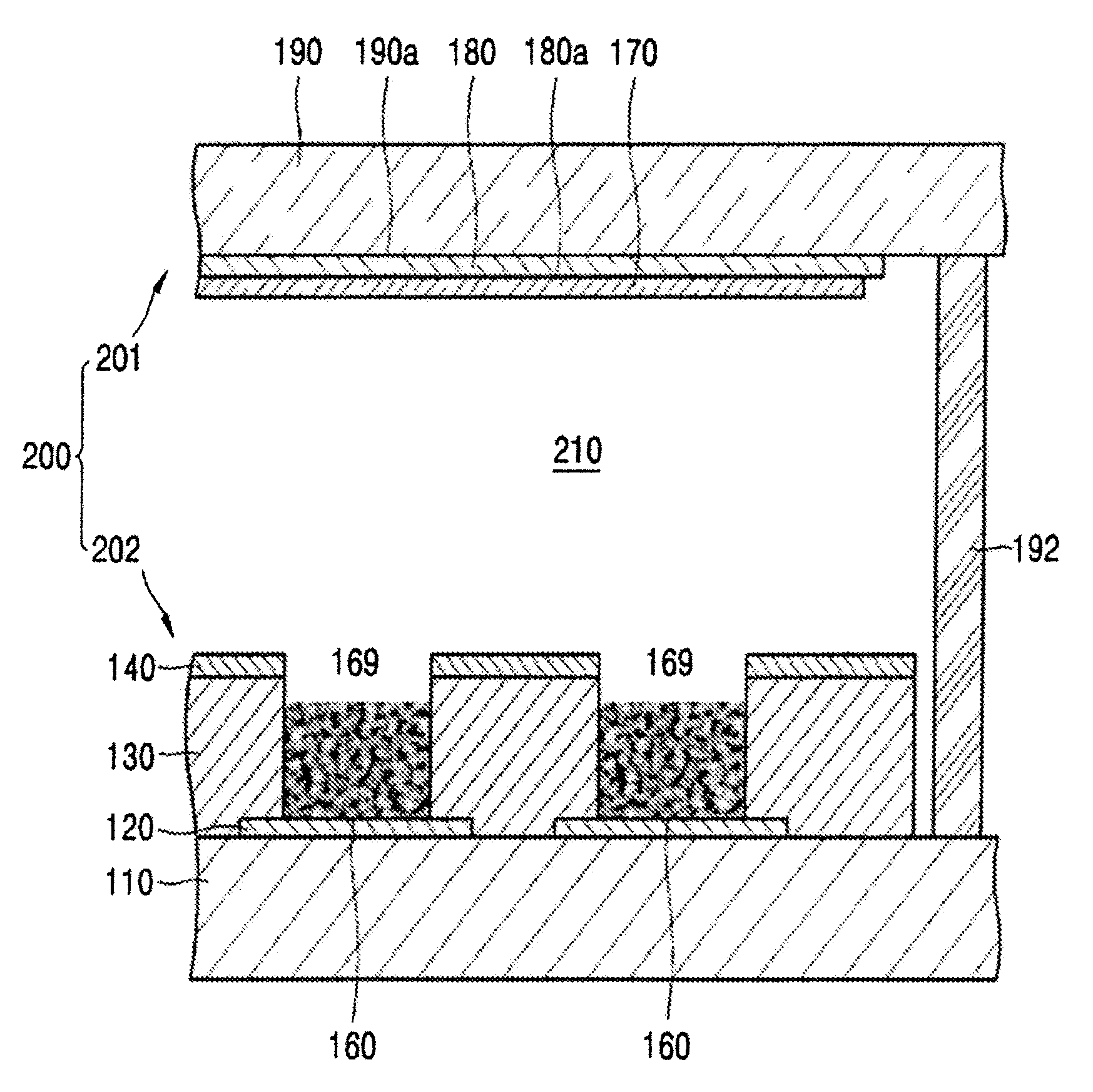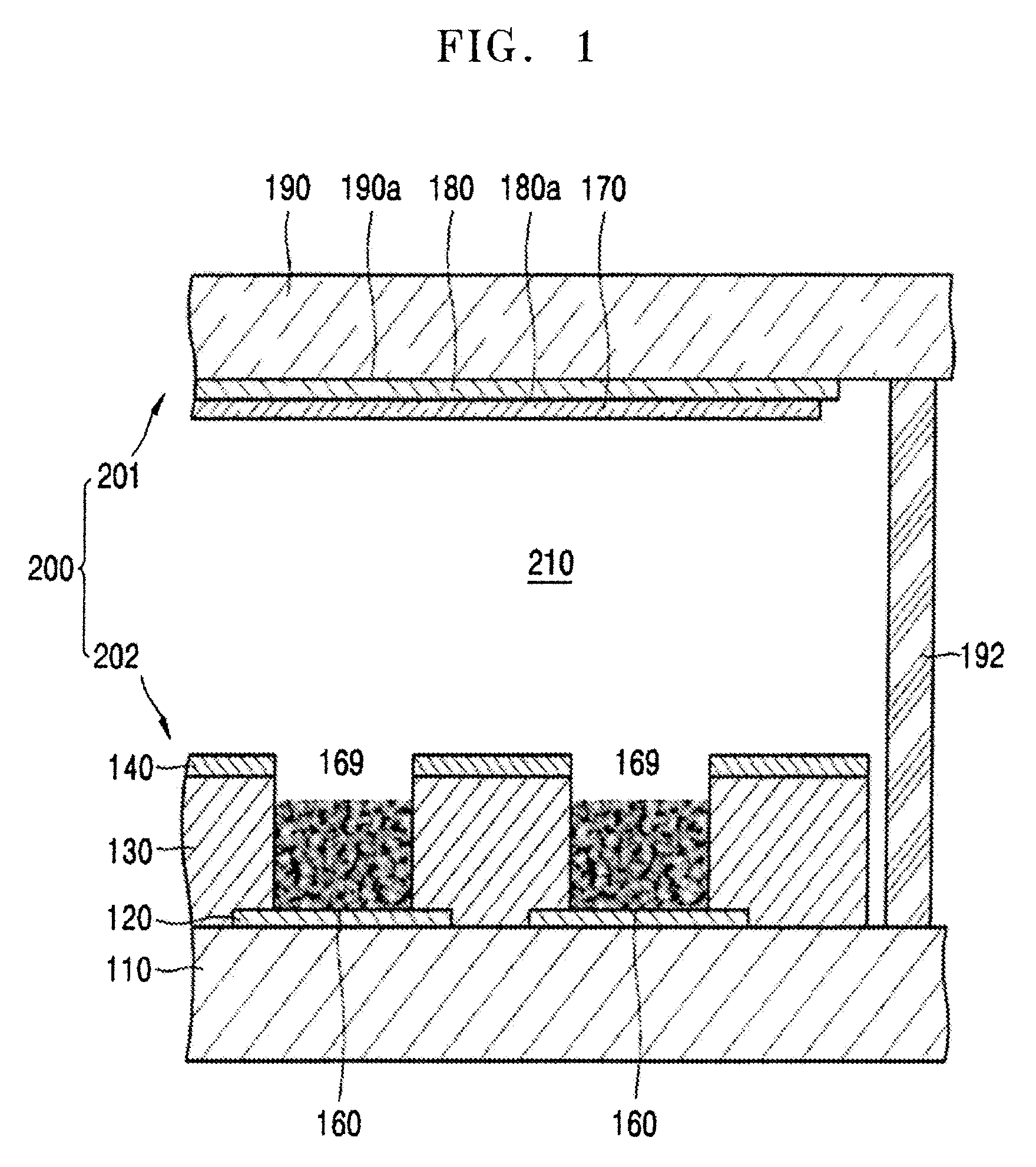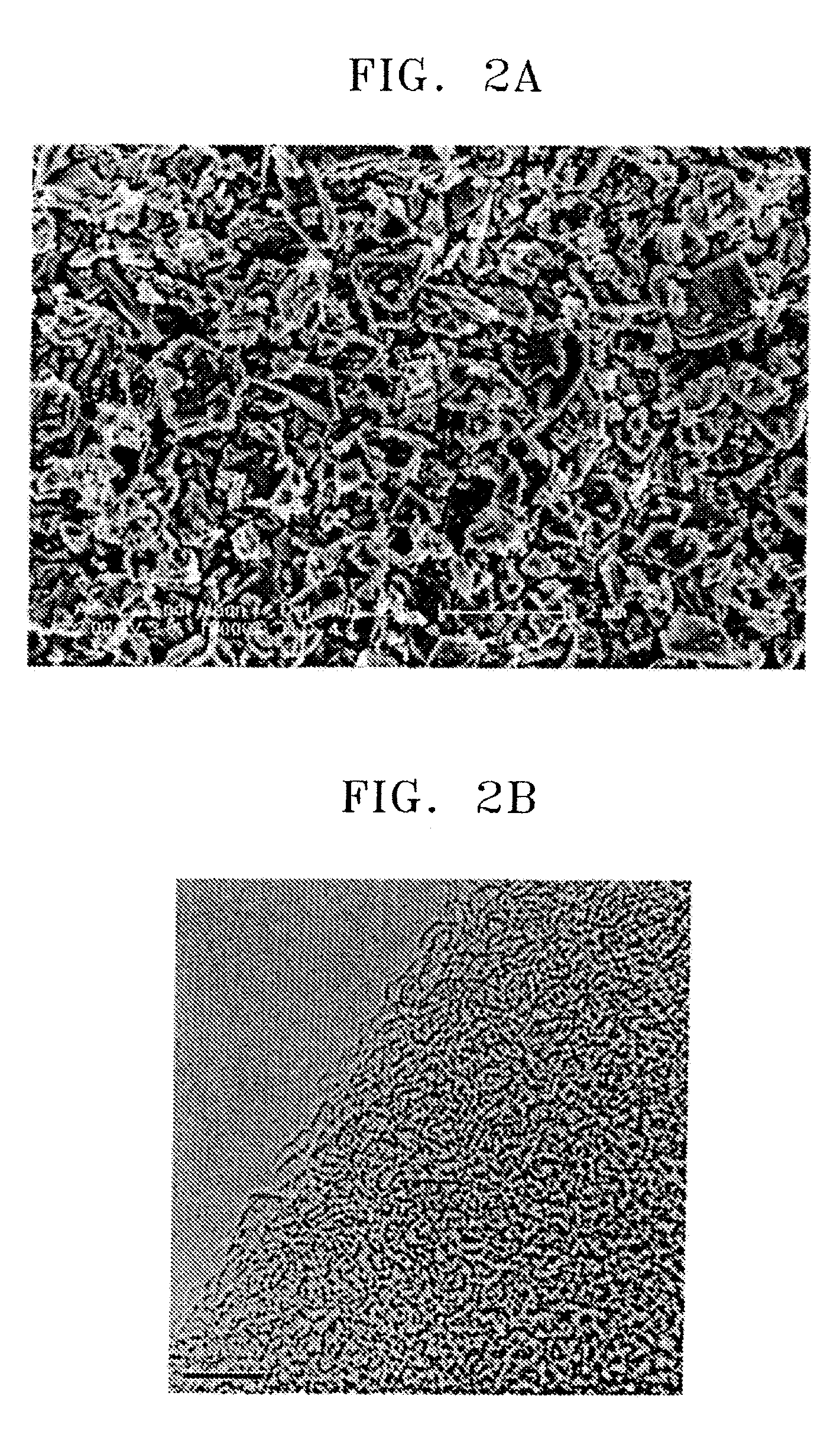Hybrid composite including carbon nanotube and carbide-derived carbon, electron emitter including the hybrid composite, method of preparing the electron emitter, and electron emission device including the electron emitter
a hybrid composite and carbon nanotube technology, applied in the manufacture of electrode systems, conductors, electric discharge tubes/lamps, etc., can solve the problems of fiber-shaped materials, lack of uniformity and lifetime, and decreased electron emission performance, so as to prevent screen effects and ensure uniformity and long li
- Summary
- Abstract
- Description
- Claims
- Application Information
AI Technical Summary
Benefits of technology
Problems solved by technology
Method used
Image
Examples
manufacturing example 1
Preparation of Carbide-Derived Carbon Material
[0062]100 g of α-SiC having an average particle size of 0.7 mm as a carbon precursor was thermochemically reacted with Cl2 gas flowing at a flow rate of 3 l per minute at 1100° C. in a high-temperature electric furnace including a graphite reaction chamber and a transformer, so that Si was extracted from the carbon precursor. As a result, 30 g of a carbide-derived carbon material was prepared.
[0063]FIG. 2A is a SEM image and FIG. 2B is a TEM image of the carbide-derived carbon material prepared according to manufacturing example 1.
example 1
Preparation of Electron Emitter
(1) Preparation of Hybrid Composite Composition
[0064]0.5 g of the carbide-derived carbon material obtained according to Manufacturing Example 1, 1.0 g of carbon nanotubes, 37.5 g of poly(methyl methacrylate-co-methacrylic acid) copolymer (monomer ratio of 3:1, Mw of 12,000 g / mol), 26 g of trimethylolpropanethoxylatetriacrylate(TMPEOTA) acting as a crosslinking agent, 27.5 g of texanol acting as an organic solvent, 5 g of benzophenone acting as a photoinitiator, and 2.5 g of dioctylphthalate(DOP) acting as a plasticizer were mixed. The obtained mixture was uniformly mixed and dispersed using a 3-roll mill. As a result, a hybrid composite composition was prepared.
(2) Preparation of Electron Emitter
[0065]The hybrid composite composition was used as an ink and printed (using a commercially available piezo-type inkjet printer including a single nozzle) on a borosilicate glass substrate such that the printed hybrid composite composition coating layer had a w...
examples 2 through 5
Preparation of Electron Emitter
[0066]Hybrid composite compositions were prepared in the same manner as in Example 1, except that the amounts of the carbide-derived carbon material, carbon nanotubes, and vehicle according to Table 1 were used. The ratio of components of the vehicle was the same as in Example 1.
[0067]Electron emitters were prepared in the same manner as in Example 1, except that the hybrid composite compositions listed in Table 1 were used.
TABLE 1wt %Carbide-DerivedCarbon MaterialCarbon NanotubesVehicleExample 10.51.098.5Example 20.50.599Example 32197Example 440.0495.96Example 540.00495.996
PUM
| Property | Measurement | Unit |
|---|---|---|
| Time | aaaaa | aaaaa |
| Power | aaaaa | aaaaa |
| Nanoscale particle size | aaaaa | aaaaa |
Abstract
Description
Claims
Application Information
 Login to View More
Login to View More - R&D
- Intellectual Property
- Life Sciences
- Materials
- Tech Scout
- Unparalleled Data Quality
- Higher Quality Content
- 60% Fewer Hallucinations
Browse by: Latest US Patents, China's latest patents, Technical Efficacy Thesaurus, Application Domain, Technology Topic, Popular Technical Reports.
© 2025 PatSnap. All rights reserved.Legal|Privacy policy|Modern Slavery Act Transparency Statement|Sitemap|About US| Contact US: help@patsnap.com



